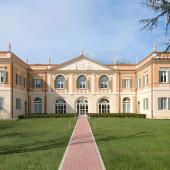The Russian building market
Despite remaining in recession, the Russian economy began to show the first signs of improvement in 2016 (GDP -0.6% following the sharp -3.7% downturn in 2015). According to figures published by Rosstat (Russian national statistics institute) and the World Bank, the economy is expected to return to positive territory this year (+1.5%) and consolidate this growth in 2018 (+1.7%).
The macroeconomic environment has naturally affected the construction industry, which continued to contract throughout 2016 following a downward trend that began in December 2013. According to the preliminary Rosstat figures reported by the agency PMR, in 2016 Russian building production fell by 4.3% year on year compared to 4.8% in 2015.
The downturn in the building sector also impacted domestic construction materials production, which dropped by 6.7% year on year during the period January-November 2016.
In 2016 the Russian ceramic tile industry managed to limit the decline in its end-of-year production to just -5.5% with respect to 2015, dropping from 170.4 to 161.1 million sq.m (Table 3). The biggest contraction was in the wall tile segment, where output fell from 75.1 million sq.m in 2015 to 69.3 million sq.m in 2016 (-7.7%). The floor tile segment suffered a modest decline during the first 9 months of the year, followed by a recovery in the last quarter to bring overall production to 91.85 million sq.m (down 3.6% on the 95.3 million sq.m of 2015).
Exports are estimated to have risen to around 24 million sq.m in 2016, 9-10% up on 2015, and as in the past were mainly shipped to the markets of Kazakhstan, Kyrgyzstan, Belarus, Ukraine and Uzbekistan.
Domestic consumption is estimated to have fallen by a further 10% from 194.6 million sq.m in 2015 to 175 million sq.m in 2016. The biggest fall was once again in imports, estimated at below 38 million sq.m (down 18.2% following the 35.6% contraction seen in 2015). With the exception of Germany and Belarus, all the other exporter countries suffered between 10% and 50% losses by volume (Table 4). As a result, imports as a share of domestic consumption fell to 21.6%.
Kerama Marazzi (Mohawk Group) confirmed its position as the largest Russian producer of ceramic tiles, closing 2016 with an output of 31 million sq.m and double-digit revenue growth.
Its results were also boosted by the expansion of its operations in the bathroom furnishing sector. On 16 January the company started up the new Continua+ line from Sacmi for the production of large ceramic panels and at Batimat Russia 2017 (Moscow, 28-31 March) will be unveiling its first 30x180 cm wood effect tiles and new 60x120 cm marble and stone look tiles, including a variety of honed surfaces and new materials produced using the double-filling technique.
- Read the complete artiche published on Ceramic World Review 120/2017
Did you find this article useful?
Join the CWW community to receive the most important news from the global ceramic industry every two weeks





















